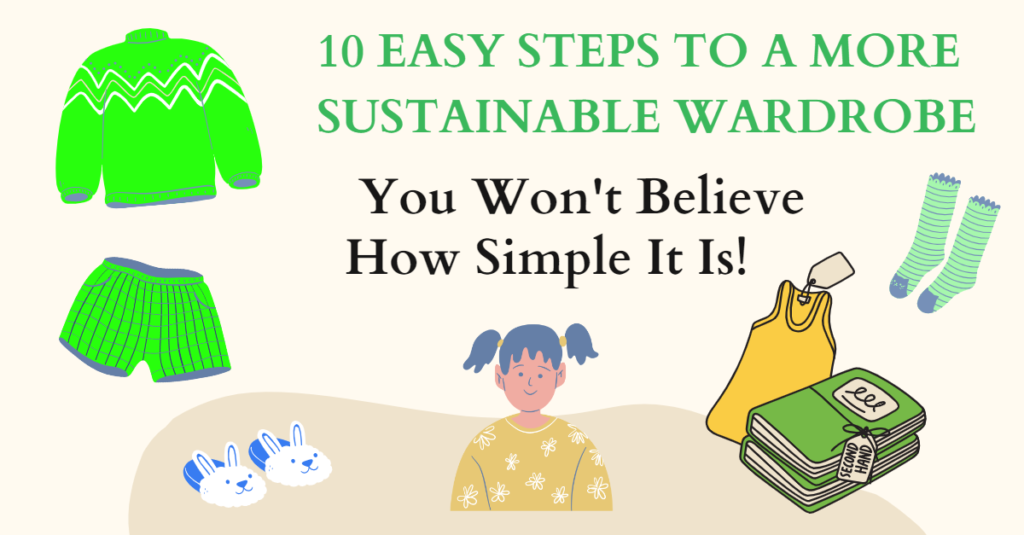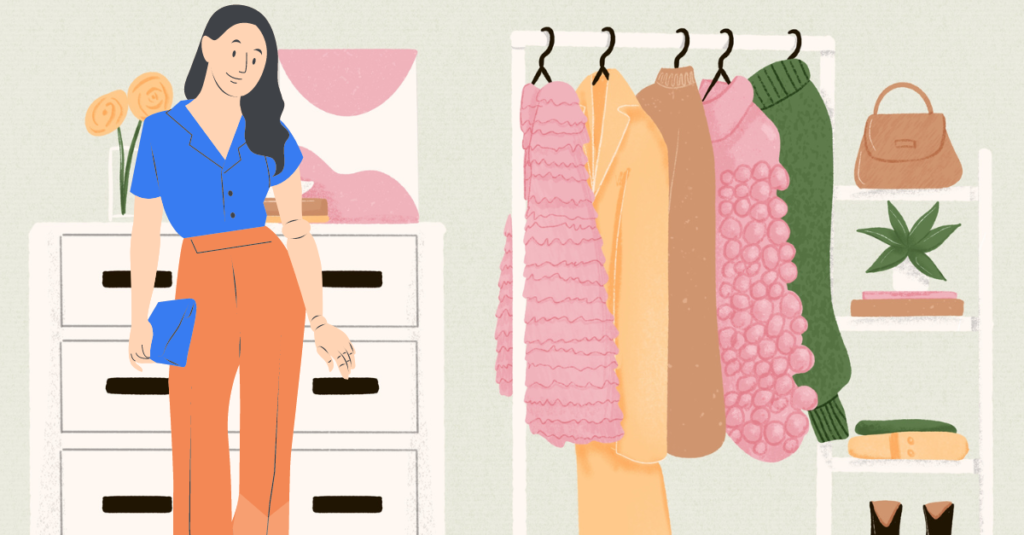10 Easy Steps to a More Sustainable Wardrobe – You Won’t Believe How Simple It Is!
Sustainability is an increasingly important topic, and one area where we can make a big impact is our clothing choices. Fast fashion, with its emphasis on cheap, disposable clothing, is a major contributor to environmental damage and exploitation of workers in the fashion industry. However, creating a sustainable wardrobe doesn’t have to be difficult or expensive. With some simple changes to our shopping habits and clothing care, we can create a more eco-friendly and ethical wardrobe that is still stylish and on-trend.
In this article, we will provide you with 10 easy steps to transform your wardrobe into a more sustainable one. From choosing eco-friendly fabrics to repairing and repurposing old clothes, these steps are simple and accessible to everyone. You may be surprised to learn that creating a sustainable wardrobe doesn’t require a complete overhaul of your closet. Small changes in the way you shop and care for your clothes can have a big impact on the environment. So if you’re ready to make a positive change and reduce your fashion footprint, read on to discover the 10 easy steps to a more sustainable wardrobe!
10 Easy Steps to a More Sustainable Wardrobe
- Choose eco-friendly fabrics
The fabrics used to make our clothes have a significant impact on the environment. Synthetic fabrics such as polyester and nylon are made from petroleum, a non-renewable resource, and can take hundreds of years to decompose. On the other hand, natural fabrics such as cotton and linen require large amounts of water and pesticides to grow.
To create a more sustainable wardrobe, choose fabrics that are eco-friendly, such as organic cotton, hemp, and bamboo. These fabrics are grown without the use of pesticides and require less water than conventional cotton. They are also biodegradable, meaning they will break down naturally and won’t contribute to landfill waste.
- Buy secondhand or vintage clothing
Buying secondhand or vintage clothing is a great way to reduce your environmental impact. Every year, millions of tons of clothes end up in landfills, where they can take hundreds of years to decompose. By buying secondhand, you are keeping clothes out of the landfill and reducing the demand for new clothes to be produced.
Shopping for secondhand or vintage clothes can be a fun and affordable way to update your wardrobe. You can find unique pieces that are no longer available in stores and save money while doing it.
- Repair and repurpose old clothes
Instead of throwing away old clothes, try repairing or repurposing them. Simple fixes such as sewing on a button or patching a hole can extend the life of your clothes and save you money on new purchases.
If you have clothes that are no longer wearable, consider repurposing them into something new. Old t-shirts can be turned into rags or a new piece of clothing, while jeans can be cut into shorts or used to make a denim tote bag.
- Choose quality over quantity
When it comes to building a sustainable wardrobe, quality is more important than quantity. Cheap clothes may be tempting, but they often fall apart after a few washes, contributing to the fast fashion cycle.
Investing in high-quality clothing may cost more upfront, but it will save you money in the long run. High-quality clothes are made with durable fabrics and construction, meaning they will last longer and require fewer replacements.
- Wash your clothes less often
Washing your clothes less often is not only good for the environment, but it can also save you time and money. Washing machines use large amounts of water and energy, and the detergents we use can pollute waterways.
Instead of washing your clothes after every wear, try wearing them a few times before washing them. Hang them up to air out in between wears, and spot clean any stains or spills. When you do wash your clothes, choose a cold water cycle and use eco-friendly detergents.
- Avoid dry cleaning
Dry cleaning is a process that uses chemicals to clean clothes, and these chemicals can be harmful to the environment and your health. The most common dry cleaning chemical, perchloroethylene (or perc), is a known carcinogen and can contaminate water and air.
To avoid dry cleaning, look for clothes that can be machine washed or hand washed. If you do need to dry clean something, choose a dry cleaner that uses eco-friendly methods such as wet cleaning or liquid CO2.
- Choose timeless styles
Trends come and go, but timeless styles never go out of fashion. By choosing timeless styles, you can create a wardrobe that will last for years and won’t need to be replaced every season. Timeless styles are also more versatile, meaning you can mix and match them with different pieces to create new outfits.
When shopping for new clothes, consider whether the item will still be in style in a few years’ time. Look for classic pieces such as a well-tailored blazer, a little black dress, or a pair of quality jeans that will never go out of fashion.
- Organize and declutter your wardrobe
Organizing and decluttering your wardrobe can help you see what you already have and what you actually need. It can also help you avoid buying clothes that you don’t need, which reduces waste and saves money.
Start by going through your clothes and separating them into piles: keep, donate, and sell. Only keep the items that you wear regularly and that fit well. Donate or sell any clothes that you no longer wear, and consider selling clothes that are still in good condition.
- Buy from sustainable and ethical brands
More and more fashion brands are now focusing on sustainability and ethical practices. When shopping for new clothes, look for brands that use eco-friendly materials, pay fair wages to workers, and have transparent supply chains.
You can also look for certifications such as Fairtrade, GOTS (Global Organic Textile Standard), and OEKO-TEX Standard 100, which ensure that the clothes are made with sustainable and ethical practices.
- Borrow or rent clothes
If you need a special outfit for a one-time event, consider borrowing or renting clothes instead of buying something new. There are now many clothing rental services available that allow you to rent designer clothes for a fraction of the cost of buying them.
By borrowing or renting clothes, you can reduce your environmental impact and save money. Plus, you can wear something new and different without having to add it to your wardrobe permanently.
In conclusion, creating a sustainable wardrobe doesn’t have to be difficult or expensive. By making small changes to the way you shop and care for your clothes, you can make a big impact on the environment and your wallet. From choosing eco-friendly fabrics to renting clothes, these 10 easy steps will help you build a wardrobe that is sustainable, stylish, and timeless.

My name is Rohit Vagh and I’m a content writer specializing in fashion and lifestyle. I have three years of experience in this field and have written various articles. My writing style is creative and engaging, and I strive to create content that resonates with my readers. I have a deep passion for fashion and am constantly researching the latest trends and styles to make sure my readers are up to date. I’m excited to continue my career in blogging, and I’m always looking for new opportunities in the fashion and lifestyle space.





